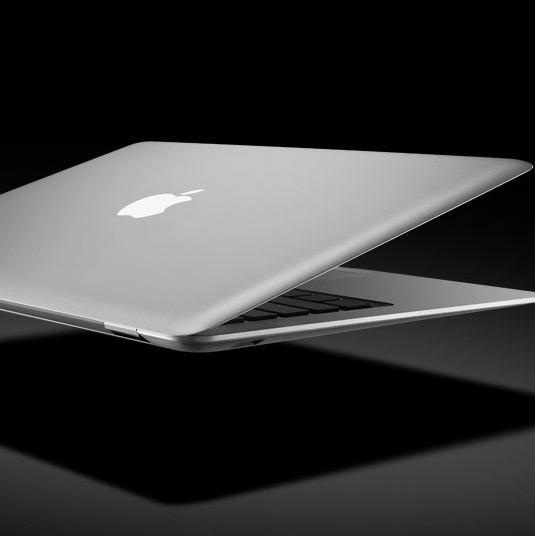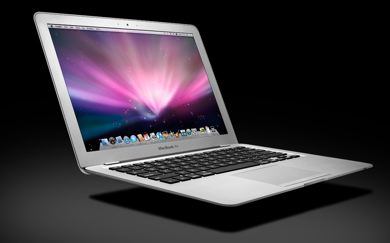 Gadget guy Phil Baker checked out MacWorld in San Francisco last week, where he reviewed Steve Jobs’ latest innovation—the MacBook Air.
Gadget guy Phil Baker checked out MacWorld in San Francisco last week, where he reviewed Steve Jobs’ latest innovation—the MacBook Air.
Read on to find out his take on the ultra-compact notebook, and whether travelers will benefit from this upcoming release.
I’ve used ultra-compact notebooks for years. I switched to a MacBook as my primary computer more than a year ago to avoid the increasing aggravation of Windows.
But the MacBooks, as all Apple notebooks, weigh more than five pounds compared to three pounds or less for most ultra-portables. Those two pounds may not seem much of a difference, but for business travelers, the smaller size and lighter weight is a big advantage.
Steve Jobs unveiled the MacBook Air, which will be available in about two weeks for $1,799.
Apple’s notebooks have always been beautifully designed with clean, geometric shapes, curved corners and careful attention to detail. But the Air goes much further. Like the iPhone, the design is leaps ahead of the competition.
It’s a gentle wedge that’s just 3/4-inch thick at the rear and less than 1/4-inch at the front and sides, which seem to float in space as a result of its convex bottom. It’s beautifully constructed out of brushed aluminum.
Unlike many of the ultra-lights, the Air has a full-size, no-compromise keyboard. It’s much like the MacBook, which has one of the best keyboards I’ve ever used. The keyboard is also backlit, making it easier to see in dim light.
The glossy display is a wide screen, 13.3 inches. It’s very bright, backlit with LEDs, which eliminate mercury and use less power. There’s an oversized track pad which responds to gestures much like the iPhone’s screen. I was able to zoom in and out, scan and even rotate photos using simple finger movements.
As thin and light as it is, the Air seems sturdy. It opened and closed with precision, and there was no flexing. Mechanically, it’s superb. There was no noticeable heat radiating from the bottom as on Apple’s other models, the result of a smaller circuit board with an Intel Core 2 Duo processor designed for the Air.
 With every new product, Jobs likes to do something different and often controversial. He was the first to eliminate the floppy drive and then to skip the PC card slot. His latest move? This is the first notebook with the battery sealed inside, meaning that it’s not user replaceable (just like the iPhone and iPod). The huge, thin battery occupies nearly the computer’s full width; making it removable would have weakened the Air’s housing and added to its thickness.
With every new product, Jobs likes to do something different and often controversial. He was the first to eliminate the floppy drive and then to skip the PC card slot. His latest move? This is the first notebook with the battery sealed inside, meaning that it’s not user replaceable (just like the iPhone and iPod). The huge, thin battery occupies nearly the computer’s full width; making it removable would have weakened the Air’s housing and added to its thickness.
What’s the impact of this? You can’t use the Air for more than five hours or so. For travelers, that five-hour time limit is, well, limiting. And to date, Apple has not licensed its MagSafe power-adapter plug so there’s no third party, add-on batteries. Hopefully that will change.
Secondly, if the battery wears out in a year or two, Apple will have to replace it for you. An Apple spokesman told me the battery could be replaced at an Apple store for $129 while you wait.
The other concessions to form over function are the elimination of a DVD optical drive and fewer ports. Many of the other ultra-portable notebooks have managed to squeeze in a drive, useful for watching DVDs and for installing programs.
However, Apple has come up with a clever solution: It provides software that allows you to use the optical drive of another computer, even a PC, to load programs. As for ports, there are three: one USB, a monitor, and an earphone connector. To connect to Ethernet you’ll need to purchase a $30 USB adapter.
So what’s the verdict? Apple has pushed the envelope by developing a computer that fills an envelope. It’s gorgeous and functional, with a great keyboard and screen. Yes, it does make concessions that seem to hurt the users that need the product the most—the frequent traveler—but it doesn’t compromise where it matters the most, the keyboard and screen.
So the real question is, for whom is this model best suited? It’s too expensive for a first computer, and is too limiting as an only computer. While I was originally looking to replace my MacBook, I’m now considering another option: buying a second. That’s probably just what Steve Jobs had in mind!
From Phil Baker’s column in the San Diego Transcript. Read Phil Baker’s blog at https://blog.philipgbaker.com
Looking for more advice on great travel gadgets? Look no further than our Travel Gadgets section.
Or check out this Travel Gadget Spotlight: Packing More in Your Carry-On.












